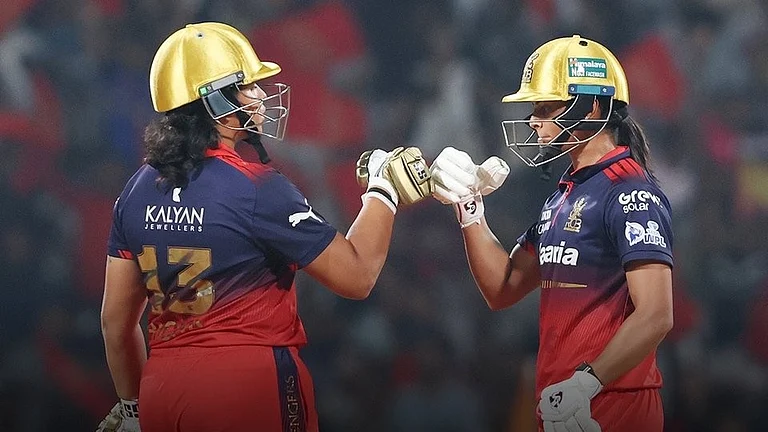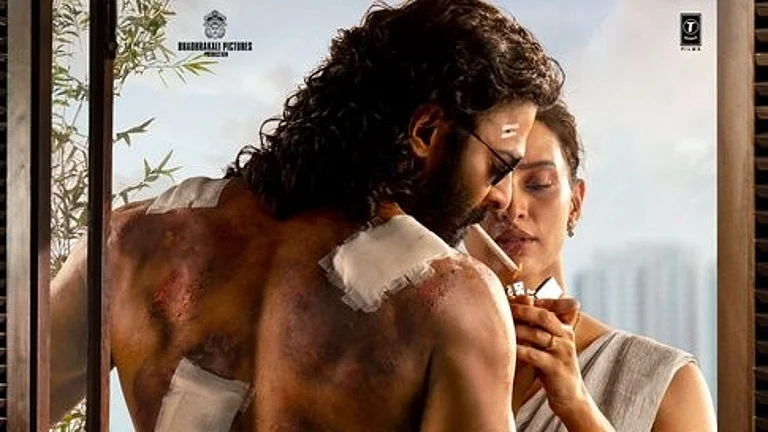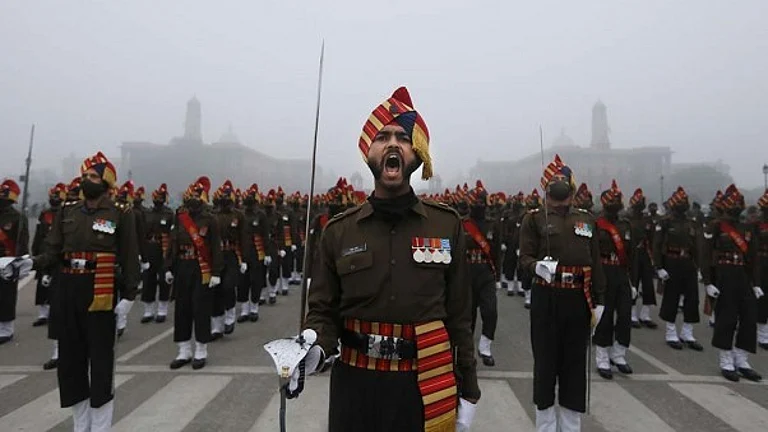If the 1990s saw the rise of intoxicating romantic musicals in Bollywood, the Tenties of the new century is widely acknowledged to have given way to a new, realistic stream in Hindi cinema. Although its credit largely goes to Dibakar Banerjee and his film, Love, Sex Aur Dhokha, there has hardly been any other film that created a stir like Anurag Kashyap’s Gangs of Wasseypur in the first two decades of the 21st century.
In 2019, Britain's The Guardian newspaper compiled a list of 100 best films from around the world in the new century, where Gangs of Wasseypur was the sole entry from Bollywood. Kashyap had, of course, earlier produced acclaimed movies such as Paanch, Black Friday, No Smoking, Dev D, Gulaal and The Girl in Yellow Boots, but none had caused the storm the way Gangs of Wasseypur did.
With a huge canvas of Gangs of Wasseypur, made in two parts, the atmosphere created by combining story, characters, dialogues and music was such Anurag himself could never do it before and after that movie. More than ten years have passed since the film was released in 2012, but if one were to trace the roots of Hindi, violence and small towns, both on big screen and streaming platforms, one has to pass through Wasseypur.
Given the recent string of flops, including Anurag's own, Dobaaraa, it is logical to turn to Gangs of Wasseypur as the film that crafted its own language, with a storm of experiments, defying all Bollywood conventions. Although Anurag Kashyap’s younger brother Abhinav Kashyap had earlier taken a big Bollywood film, Dabangg away from Mumbai to a small town in Uttar Pradesh, the extent to which Anurag Kashyap went with Gangs of Wasseypur was never in the safe zone in Bollywood. The film is such a milestone in Hindi cinema that its history before and after this film can be understood through its filming, story, characters and influences.
Gangster life, violence, crime, and love-hate relationships have been the recurring themes of Anurag's films. Who can forget Satya, written in collaboration with Saurabh Shukla? Although the setting of most of these films is the city, Wasseypur, a small town in Dhanbad with its coal mines, has been the historical ground of violence, politics and murders.
The story of an ancestral rivalry between Ramadhir Singh (Tigmanshu Dhulia) and Sardar Khan (Manoj Bajpayee) sets the backdrop of the cycle of India's changing national politics, but the most important aspect of the film is how it distinctly portrays life in small-town India on screen.
In one of his interviews, Anurag said that his only aim was to tell a North Indian story. But the film says and does a lot more than that. Gangs of Wasseypur presents the tragic life of the small town in Hindi cinema. Also, it breaks away from the mainstream of Hindi cinema to create its own ground – the land of India nestled under the fringes of the urban dreamland of capitalist modernity.
In fact, the film portrays in a gruesome way the urban life that Bollywood had blurred in the romantic glow of Switzerland and London. Weaving the role of TV and cinema in the life of violent characters, Anurag Kashyap gives visions of a life that has emerged as an alternate ground for Bollywood's romantic love stories.
In such a rough land where the business of violence goes on unabated, no language is understood before the language of the gun and the hands of the law, however long, do not reach such places. It can be said that the metrosexual Bollywood audience has had nothing to do with such life.
A representation of small-town life that fuses truth and fiction, the film claims to be based on true events and characters and is so absurd in its filming that it is impossible to distinguish between truth and excess as if it wants to show the small town life in the most bitter and ugly form by tearing each and every wire of Bollywood's expensive mansions and fake world. This world may be influenced by national and political situations and policies, but it has its own sovereignty and balance of power within its scope.
In such representations, the nuances of tone in simple dialogues like “Beta, tumse naa ho payegaa (Son, you would not be able to do it)”, fountains of blood pouring out of the body and Nawazuddin Siddiqui’s chest-stretching after being riddled with bullets in hatred, are fraught with violent overtones but are important in the portrayal of North India.
This violent excess has now become the basic language of depictions of criminal stories in small towns. Ten years ago, this town was a new experiment in a symbolic bloody picture of India, made to a great effect by imagination, delivery and creative experimentation.
However, it has to be said that the highlight of this film is not just the sound of bullets and the colour of blood. Anurag Kashyap is a well-known 'cinephile' and he has threaded the impact of Hindi cinema in such a way that it becomes important in understanding the story, characters and atmosphere. He also uses television to imply that the land on which this film rests is not the colourful world of Saas Bhi Kabhi Bahu Thi relationships.
The film encapsulates the rivalry of three generations between 1940 and 2004 in which politics is played with the game of death, but the film does not forget to underline how the phases of cinema have changed. Kashyap himself has been a fan of Amitabh Bachchan's screen avatar and it has a clear mark on the film. For example, Nawazuddin Siddiqui's character sees himself in Amitabh Bachchan's Angry Young Man. Anyone who has watched the characters of Amitabh Bachchan in films like Deewar, Zanjeer, and Trishul knows that all his characters are of a man who grew up in adverse social conditions, and whose life is surrounded by memories of deprivation and misery. These are the methods adopted to stay alive in the circumstances arising out of those bitter memories.
In a scene in Gangs of Wasseypur, Nawazuddin encounters a man who looks like Bachchan. It's a wonderful cinematic moment where the character and the cinematic image look into each other's eyes looking for answers to certain questions. Not only this, the use of folk music from Bihar and songs from Hindi films in the film introduces a new dimension of realistic portrayal by amalgamating the mainstream form of pop culture i.e. Hindi film music with the marginalised folk music in India.
'Jiya Ho Bihar Ke Lala' is a wonderful experiment in the background of Sardar Khan dying of bullets at the end of the first part of the film while the second part, beginning with Khan's body, uses the Hindi film song 'Yaad Teri Aayegi'. It is redundant to find logic in it.

Composer Sneha Khanwalkar used location-specific voices and a distinctive style of local singers to create the atmosphere, which is not the typical way of making Hindi film music. Khanwalkar went to Bihar and Hindi-speaking areas and recorded voices. Instead of a Bollywood singer, Sneha roped in two Bihar-based singers Rekha Jha and Khushboo Raj to sing a popular song from the film, 'Womaniya', while for the chorus, common women were roped in to create music that had no ground connection. The use of the techno-music may seem odd at times, but it has its place in the film's overall structure and experimentalism.
Gangs of Wasseypur showed just how playful a cinematic depiction can be, even though it is a complex tale, told with flights of imagination. The film's depiction of various forms of masculinity can also be added to the list of its experiments. For example, if the violent character of Sardar Khan played by Manoj Bajpayee can be identified by a strong sexual desire, then the character of Faizal portrayed by Nawazuddin Siddiqui, who is compelled to inherit the violence from his father, has deeper layers.
He declares himself worthy to take over the throne by slitting the throat of his enemy, but somewhere in a corner, there is a man whose red eyes are trying to tell him that life could have been something else for him. An urban audience might dismiss this character wearing cheap black glasses and a floral shirt as 'over the top' but Faisal is the only character who takes his sweetheart's consent before making love.
Hindi cinema has taken a long time to reach this character. Gangs of Wasseypur is a unique page in cine history that needs both courage and determination to be seen and understood.
Swati Bakshi is doing research on Hindi cinema at the University of Westminster, London, and writes on contemporary issues
























